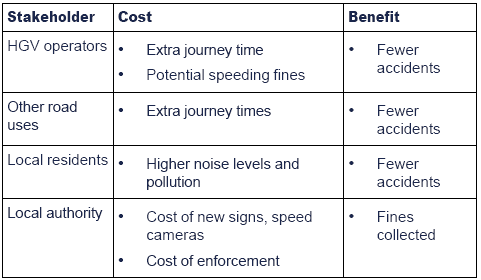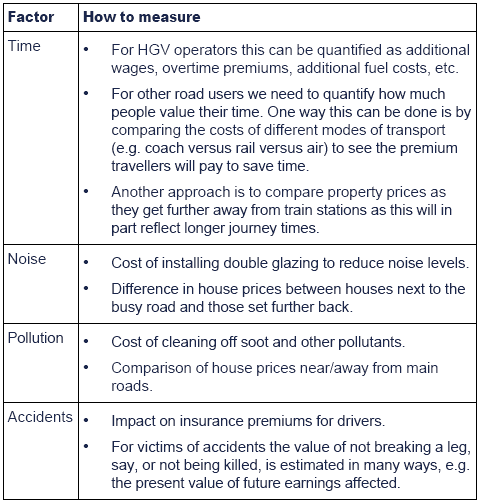Performance management in not-for-profit organisations
Performance management is a key issue for the managers of any organisation but people running not-for-profit organisations face particular problems. This page looks at those problems and potential solutions.
What is a not-for-profit (NFP) organisation?
NFP organisations display the following characteristics:
- Most do not have external shareholders and hence the maximisation of shareholder wealth is not the primary objective.
- They do not distribute dividends.
- Their objectives normally include some social, cultural, philanthropic, welfare or environmental dimension which would not be readily provided in their absence.
When assessing the performance of NFP organisations it is important to include both financial and non-financial measures.
Problems associated with performance measurement in NFP organisations include the following:
Problem 1: Non-quantifiable costs and benefits
Introduction
Many of the benefits arising from expenditure by these bodies are non-quantifiable in monetary terms. The same can be true of costs. This is because:
- No readily available scale exists.
For example, how to measure the impact of a charity providing a help line to people suffering from depression?
- How to trade off cost and benefits measured in a different way.
For example, suppose funds in a hospital are reallocated to reduce waiting lists (a benefit) but at the expense of the quality of patient care (a cost). Is the time saved enough to compensate for any potential additional suffering?
- Time scale problems.
Benefits often accrue over a long time period and therefore become difficult to estimate reliably. For example, a school may invest in additional sports facilities that will benefit pupils over many decades.
- Externalities.
Suppose a council decides to grant planning permission for new houses to be built. The new residents will increase the number of cars on local roads, resulting in greater congestion and pollution, affecting other residents.
Solution = cost benefit analysis (CBA)
Some NFP organisations, particularly in the public sector, attempt to resolve the above difficulties by quantifying in financial terms all of the costs and benefits associated with a decision.
Illustration - CBA
Suppose a local government department is considering whether to lower the speed limit for heavy goods vehicles (HGVs) travelling on a particular road through a residential area. The affected stakeholders may be identified as follows:

These costs and benefits then need to be quantified financially.

Once these have been quantified, it is relatively straightforward to compare overall costs and benefits to see the net impact on society and then make a decision.
Problem 2: Assessing the use of funds
Introduction
Many NFP organisations, particularly public sector organisations,do not generate revenue but simply have a fixed budget for spending within which they have to keep. The funding in public sector organisations tends to come directly from the government.
There are a number of problems associated with this funding:
- The organisation may feel under pressure to hit government targets rather than focusing on what they would normally consider important.
- There is not necessarily a link between providing more service and obtaining more funds. Funding tends to be limited and may not be controllable.
- A failure to achieve objectives sometimes leads to higher levels of funding. Fore example, an ineffective or inefficient police force will not be closed down, but is likely to justify and obtain additional funding.
Solution = assess value for money
Value for money (VFM) is often quoted as an objective in NFP organisations, i.e. have they gained the best value from the limited funds available?
VFM can be assessed in a number of ways:
- through benchmarking an activity against similar activities in other organisations
- by using performance indicators/ measures
- through conducting VFM studies (possibly in conjunction with other institutions)
- by seeking out and then adopting recognised good practice where this can be adapted to the institution's circumstances
- through internal VFM audit work
- through retaining both documents that show how an activity has been planned to build in VFM, and evidence of the good practices adopted
- by examining the results or outcomes of an activity.
The 3Es
Value for money is interpreted as providing an economic, efficient and effective service.
Economy - an input measure. Are the resources the cheapest possible for the quality desired?
Efficiency - here we link inputs and outputs. Is the maximum output being achieved from the resources used?
Effectiveness - an output measure looking at whether objectives are being met.
Other methods of evaluating performance
In addition to assessing value for money and the 3Es the following approaches can be used to assess the performance of NFP organisations:
- The 'goal approach' looks at the ultimate objectives of the organisation, i.e. it looks at output measures.
For example for a hospital: Have waiting lists been reduced? Have mortality rates gone down? How many patients have been treated?
- The 'systems resources approach' looks at how well the organisation has obtained the inputs it needs to function.
For example, did the hospital manage to recruit all the nurses it needed?
- The 'internal processes approach' looks at how well inputs have been used to achieve outputs - it is a measure of efficiency.
For example, what was the average cost per patient treated?
Problem 3: Multiple and diverse objectives
Diverse objectives
As mentioned, NFP organisations are unlikely to have an objective of maximisation of shareholder wealth. Instead they are seeking to satisfy the particular needs of their members or sections of society,which they have been set up to benefit.
Diverse objectives in NFP organisations include:
- A hospital's objective is to treat patients.
- A council's objective is care for the local community.
- A charity's objective may be to provide relief for victims of a disaster.
Multiple objectives
Multiple stakeholders in NFP organisations give rise to multiple objectives. This can be problematic when assessing the performance of these organisations.
Solution
The problem of multiple objectives can be overcome by prioritising objectives or making compromises between objectives.
Illustration
For example, a hospital will have a number of different groups of stakeholders, each with their own objectives:
- Employees will seek a high level of job satisfaction. They will also aim to achieve a good work-life balance and this may result in a desire to work more regular daytime hours.
- Patients will want to be seen quickly and will demand a high level of care.
There is potential conflict between the objectives of the two stakeholder groups. For example, if hospital staff only work regular daytime hours then patients may have to wait a long time if they come to the hospital outside of these hours and the standard of patient care will fall dramatically at certain times of the day.
The hospital must prioritise the needs of different stakeholder groups. In this case, the standard of patient care would be prioritised above giving staff the regular daytime working hours that they would prefer. However, in order to maintain staff morale an element of compromise should also be used. For example, staff may have to work shifts but will be given generous holiday allowances or rewards to compensate for this.
Problem 4: The impact of politics on performance measurement
The combination of politics and performance measurement in the public sector may result in undesirable outcomes.
- The public focus on some sectors, such as health and education, make them a prime target for political interference.
- Long-term organisational objectives are sacrificed for short-term political gains.
Illustration - Impact of politics
Politicians may promise 'increased funding' and 'improved performance' as that is what voters want to hear, but it may result in undesirable outcomes.
Increased funding:
- may be available only to the detriment of other public sector organisations
- may be provided to organisations in political hot-spots, not necessarily the places that need more money
- may not be used as efficiently or effectively as it could be
- may only be available in the short-term, as a public relations exercise.
Improved performance:
- may be to the detriment of workers and client's
- may come about as the result of data manipulation, rather than real results
- may be a short-term phenomenon
- may result in more funds being spent on performance measurement when it might better be used on improvements, e.g. hospitals under increasing pressure to compete on price and delivery in some areas may result in a shift of resources from other, less measurable areas, such as towards elective surgery and away from emergency services.
|
Created at 6/26/2012 11:23 AM by System Account
(GMT) Greenwich Mean Time : Dublin, Edinburgh, Lisbon, London
|
Last modified at 9/26/2013 11:02 AM by System Account
(GMT) Greenwich Mean Time : Dublin, Edinburgh, Lisbon, London
|
|
|
|
 |
Rating
:
|
 Ratings & Comments
(Click the stars to rate the page) Ratings & Comments
(Click the stars to rate the page)
|
 |
Tags:
|
|
|
|
|